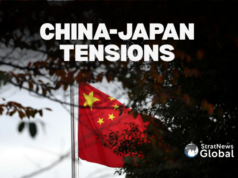Nepal has reignited its border dispute with India by including the contentious territories of Kalapani, Lipulekh, and Limpiyadhura in the Class 8 social studies curriculum. These areas lie in Uttarakhand’s Pithoragarh district, and have been claimed by Nepal in the past. But their inclusion in school textbooks marks a move to institutionalise the claim among Nepal’s youth.
Domestic Unrest
This development comes amid widespread domestic unrest in Nepal. There’s frustration over political corruption, economic stagnation and growing Chinese influence in the Himalayan nation. Major protests have erupted in capital Kathmandu, with citizens demanding the return of monarchy. Many in Nepal view the government’s alignment with Beijing—and growing distance from India—as part of the broader problem.
India’s Firm Response
India’s PM Narendra Modi met his Nepalese counterpart KP Sharma Oli last week on the sidelines of the BIMSTEC summit in Bangkok. Did they discuss this issue? StratNews Global asked Ministry of External Affairs (MEA) spokesperson Randhir Jaiswal at a weekly press briefing yesterday. His response: “We have a bilateral mechanism with Nepal to discuss border issues. When a country takes unilateral action, that doesn’t mean the situation on the ground or the reality will change. So that is how we look at these border issues.”
Disputed Territories & Background
The dispute centres around a 370-square-kilometre region near the tri-junction of India, China and Nepal. According to experts, the Kalapani region holds strategic importance, especially the Lipulekh Pass, which serves as a route for Indian pilgrims travelling to Kailash Mansarovar in Tibet.
The origin of the dispute lies in the 1816 Treaty of Sugauli between the British East India Company and Nepal, which defined the Mahakali River as the western boundary. The disagreement arises over identifying the river’s true source. Historical maps, including the 1879 and 1924 editions from the Survey of India, show these regions as part of India.
In 2020—amid heightened India-China tension following the Galwan Valley clash—Nepal’s then PM Oli released a new national map claiming Kalapani, Lipulekh and Limpiyadhura as part of Nepal. The move followed India’s construction of a strategic 80-km road to Lipulekh, an effort to bolster connectivity and defence readiness.
Nepal escalated the dispute by printing the altered map on its currency notes. And by incorporating the claim into its school curriculum, Nepal appears to be hardening its stance, possibly under China’s influence. China has made inroads into Nepal’s education sector through student exchange programmes, civil society partnerships and financial support.
Ties Strained
India and Nepal have long shared a close relationship—culturally, economically and geographically. Often described as having a “roti-beti” (bread and daughter) bond, India is Nepal’s largest trading partner. Thousands of Nepalese citizens work in India across various sectors. In this year’s annual budget (2025), India has set aside a grant of ₹700 crore for Nepal. Despite this, successive Nepalese governments have drifted towards China, leading to growing discomfort among their citizens.
The Modi-Oli Meeting
Amid strained relations, a high-stakes meeting took place between Modi and Oli on April 4 in Bangkok. The two leaders met one-on-one for over 35 minutes, marking their first substantial interaction since Oli returned to power in July last year with support from the Nepali Congress. Official statements from both sides described the meeting as “frank and candid”. But all, it seems, is not well.





